
2021 marked the re-birth of my original Blogging Innovation blog as a new blog called Human-Centered Change and Innovation.
Many of you may know that Blogging Innovation grew into the world’s most popular global innovation community before being re-branded as InnovationExcellence.com and being ultimately sold to DisruptorLeague.com.
Thanks to an outpouring of support I’ve ignited the fuse of this new multiple author blog around the topics of human-centered change, innovation, transformation and design.
I feel blessed that the global innovation and change professional communities have responded with a growing roster of contributing authors and more than 17,000 newsletter subscribers.
To celebrate we’ve pulled together the Top 100 Innovation and Transformation Articles of 2023 from our archive of over 1,800 articles on these topics.
We do some other rankings too.
We just published the Top 40 Innovation Bloggers of 2023 and as the volume of this blog has grown we have brought back our monthly article ranking to complement this annual one.
But enough delay, here are the 100 most popular innovation and transformation posts of 2023.
Did your favorite make the cut?
1. Fear is a Leading Indicator of Personal Growth – by Mike Shipulski
2. The Education Business Model Canvas – by Arlen Meyers
3. Act Like an Owner – Revisited! – by Shep Hyken
4. Free Innovation Maturity Assessment – by Braden Kelley
5. The Role of Stakeholder Analysis in Change Management – by Art Inteligencia
6. What is Human-Centered Change? – by Braden Kelley
7. Sustaining Imagination is Hard – by Braden Kelley
8. The One Movie All Electric Car Designers Should Watch – by Braden Kelley
9. 50 Cognitive Biases Reference – Free Download – by Braden Kelley
10. A 90% Project Failure Rate Means You’re Doing it Wrong – by Mike Shipulski
11. No Regret Decisions: The First Steps of Leading through Hyper-Change – by Phil Buckley
12. Reversible versus Irreversible Decisions – by Farnham Street
13. Three Maps to Innovation Success – by Robyn Bolton
14. Why Most Corporate Innovation Programs Fail (And How To Make Them Succeed) – by Greg Satell
15. The Paradox of Innovation Leadership – by Janet Sernack
16. Innovation Management ISO 56000 Series Explained – by Diana Porumboiu
17. An Introduction to Journey Maps – by Braden Kelley
18. Sprint Toward the Innovation Action – by Mike Shipulski
19. Marriott’s Approach to Customer Service – by Shep Hyken
20. Should a Bad Grade in Organic Chemistry be a Doctor Killer? – NYU Professor Fired for Giving Students Bad Grades – by Arlen Meyers, M.D.
21. How Networks Power Transformation – by Greg Satell
22. Are We Abandoning Science? – by Greg Satell
23. A Tipping Point for Organizational Culture – by Janet Sernack
24. Latest Interview with the What’s Next? Podcast – with Braden Kelley
25. Scale Your Innovation by Mapping Your Value Network – by John Bessant
26. Leveraging Emotional Intelligence in Change Leadership – by Art Inteligencia
27. Visual Project Charter™ – 35″ x 56″ (Poster Size) and JPG for Online Whiteboarding – by Braden Kelley
28. Unintended Consequences. The Hidden Risk of Fast-Paced Innovation – by Pete Foley
29. A Shortcut to Making Strategic Trade-Offs – by Geoffrey A. Moore
30. 95% of Work is Noise – by Mike Shipulski

31. 8 Strategies to Future-Proofing Your Business & Gaining Competitive Advantage – by Teresa Spangler
32. The Nine Innovation Roles – by Braden Kelley
33. The Fail Fast Fallacy – by Rachel Audige
34. What is the Difference Between Signals and Trends? – by Art Inteligencia
35. A Top-Down Open Innovation Approach – by Geoffrey A. Moore
36. FutureHacking – Be Your Own Futurist – by Braden Kelley
37. Five Key Digital Transformation Barriers – by Howard Tiersky
38. The Malcolm Gladwell Trap – by Greg Satell
39. Four Characteristics of High Performing Teams – by David Burkus
40. ACMP Standard for Change Management® Visualization – 35″ x 56″ (Poster Size) – Association of Change Management Professionals – by Braden Kelley
41. 39 Digital Transformation Hacks – by Stefan Lindegaard
42. The Impact of Artificial Intelligence on Future Employment – by Chateau G Pato
43. A Triumph of Artificial Intelligence Rhetoric – Understanding ChatGPT – by Geoffrey A. Moore
44. Imagination versus Knowledge – Is imagination really more important? – by Janet Sernack
45. A New Innovation Sphere – by Pete Foley
46. The Pyramid of Results, Motivation and Ability – Changing Outcomes, Changing Behavior – by Braden Kelley
47. Three HOW MIGHT WE Alternatives That Actually Spark Creative Ideas – by Robyn Bolton
48. Innovation vs. Invention vs. Creativity – by Braden Kelley
49. Where People Go Wrong with Minimum Viable Products – by Greg Satell
50. Will Artificial Intelligence Make Us Stupid? – by Shep Hyken

51. A Global Perspective on Psychological Safety – by Stefan Lindegaard
52. Customer Service is a Team Sport – by Shep Hyken
53. Top 40 Innovation Bloggers of 2022 – Curated by Braden Kelley
54. A Flop is Not a Failure – by John Bessant
55. Generation AI Replacing Generation Z – by Braden Kelley
56. ‘Innovation’ is Killing Innovation. How Do We Save It? – by Robyn Bolton
57. Ten Ways to Make Time for Innovation – by Nick Jain
58. The Five Keys to Successful Change – by Braden Kelley
59. Back to Basics: The Innovation Alphabet – by Robyn Bolton
60. The Role of Stakeholder Analysis in Change Management – by Art Inteligencia
61. Will CHATgpt make us more or less innovative? – by Pete Foley
62. 99.7% of Innovation Processes Miss These 3 Essential Steps – by Robyn Bolton
63. Rethinking Customer Journeys – by Geoffrey A. Moore
64. Reasons Change Management Frequently Fails – by Greg Satell
65. The Experiment Canvas™ – 35″ x 56″ (Poster Size) – by Braden Kelley
66. AI Has Already Taken Over the World – by Braden Kelley
67. How to Lead Innovation and Embrace Innovative Leadership – by Diana Porumboiu
68. Five Questions All Leaders Should Always Be Asking – by David Burkus
69. Latest Innovation Management Research Revealed – by Braden Kelley
70. A Guide to Effective Brainstorming – by Diana Porumboiu
71. Unlocking the Power of Imagination – How Humans and AI Can Collaborate for Innovation and Creativity – by Teresa Spangler
72. Rise of the Prompt Engineer – by Art Inteligencia
73. Taking Care of Yourself is Not Impossible – by Mike Shipulski
74. Design Thinking Facilitator Guide – A Crash Course in the Basics – by Douglas Ferguson
75. What Have We Learned About Digital Transformation Thus Far? – by Geoffrey A. Moore
76. Building a Better Change Communication Plan – by Braden Kelley
77. How to Determine if Your Problem is Worth Solving – by Mike Shipulski
78. Increasing Organizational Agility – by Braden Kelley
79. Mystery of Stonehenge Solved – by Braden Kelley
80. Agility is the 2023 Success Factor – by Soren Kaplan
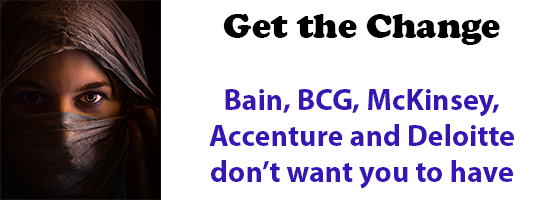
81. The Five Gifts of Uncertainty – by Robyn Bolton
82. 3 Innovation Types Not What You Think They Are – by Robyn Bolton
83. Using Limits to Become Limitless – by Rachel Audige
84. What Disruptive Innovation Really Is – by Geoffrey A. Moore
85. Today’s Customer Wants to Go Fast – by Shep Hyken
86. The 6 Building Blocks of Great Teams – by David Burkus
87. Unlock Hundreds of Ideas by Doing This One Thing – Inspired by Hollywood – by Robyn Bolton
88. Moneyball and the Beginning, Middle, and End of Innovation – by Robyn Bolton
89. There are Only 3 Reasons to Innovate – Which One is Yours? – by Robyn Bolton
90. A Shortcut to Making Strategic Trade-Offs – by Geoffrey A. Moore
91. Customer Experience Personified – by Braden Kelley
92. 3 Steps to a Truly Terrific Innovation Team – by Robyn Bolton
93. Building a Positive Team Culture – by David Burkus
94. Apple Watch Must Die – by Braden Kelley
95. Kickstarting Change and Innovation in Uncertain Times – by Janet Sernack
96. Take Charge of Your Mind to Reclaim Your Potential – by Janet Sernack
97. Psychological Safety, Growth Mindset and Difficult Conversations to Shape the Future – by Stefan Lindegaard
98. 10 Ways to Rock the Customer Experience In 2023 – by Shep Hyken
99. Artificial Intelligence is Forcing Us to Answer Some Very Human Questions – by Greg Satell
100. 23 Ways in 2023 to Create Amazing Experiences – by Shep Hyken
Curious which article just missed the cut? Well, here it is just for fun:
101. Why Business Strategies Should Not Be Scientific – by Greg Satell
These are the Top 100 innovation and transformation articles of 2023 based on the number of page views. If your favorite Human-Centered Change & Innovation article didn’t make the cut, then send a tweet to @innovate and maybe we’ll consider doing a People’s Choice List for 2023.
If you’re not familiar with Human-Centered Change & Innovation, we publish 1-6 new articles every week focused on human-centered change, innovation, transformation and design insights from our roster of contributing authors and ad hoc submissions from community members. Get the articles right in your Facebook feed or on Twitter or LinkedIn too!
Editor’s Note: Human-Centered Change & Innovation is open to contributions from any and all the innovation & transformation professionals out there (practitioners, professors, researchers, consultants, authors, etc.) who have a valuable insight to share with everyone for the greater good. If you’d like to contribute, contact us.
 Sign up here to get Human-Centered Change & Innovation Weekly delivered to your inbox every week.
Sign up here to get Human-Centered Change & Innovation Weekly delivered to your inbox every week.

![]() Sign up here to join 17,000+ leaders getting Human-Centered Change & Innovation Weekly delivered to their inbox every week.
Sign up here to join 17,000+ leaders getting Human-Centered Change & Innovation Weekly delivered to their inbox every week.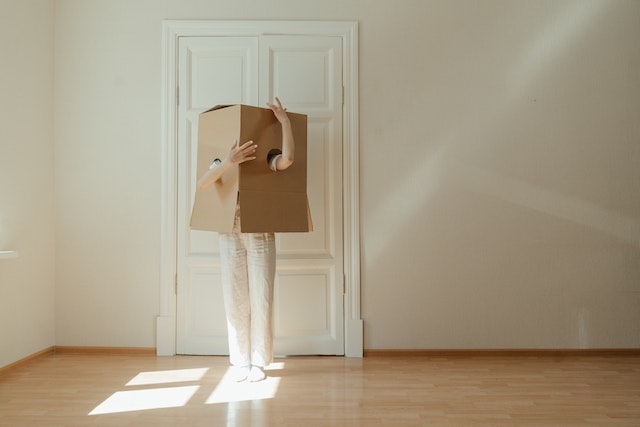









 After a week of torrid voting and much passionate support, along with a lot of gut-wrenching consideration and jostling during the judging round, I am proud to announce your Top 40 Innovation Bloggers of 2023:
After a week of torrid voting and much passionate support, along with a lot of gut-wrenching consideration and jostling during the judging round, I am proud to announce your Top 40 Innovation Bloggers of 2023:

 Greg Satell is a popular speaker and consultant. His first book,
Greg Satell is a popular speaker and consultant. His first book, 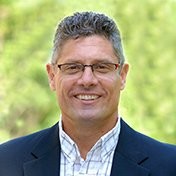 Mike Shipulski brings together people, culture, and tools to change engineering behavior. He writes daily on Twitter as
Mike Shipulski brings together people, culture, and tools to change engineering behavior. He writes daily on Twitter as 

 A twenty-five year Procter & Gamble veteran, Pete has spent the last 8+ years applying insights from psychology and behavioral science to innovation, product design, and brand communication. He spent 17 years as a serial innovator, creating novel products, perfume delivery systems, cleaning technologies, devices and many other consumer-centric innovations, resulting in well over 100 granted or published patents. Find him at pete.mindmatters@gmail.com
A twenty-five year Procter & Gamble veteran, Pete has spent the last 8+ years applying insights from psychology and behavioral science to innovation, product design, and brand communication. He spent 17 years as a serial innovator, creating novel products, perfume delivery systems, cleaning technologies, devices and many other consumer-centric innovations, resulting in well over 100 granted or published patents. Find him at pete.mindmatters@gmail.com
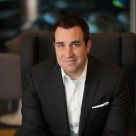





 Soren Kaplan is the bestselling and award-winning author of Leapfrogging and The Invisible Advantage, an affiliated professor at USC’s Center for Effective Organizations, a former corporate executive, and a co-founder of
Soren Kaplan is the bestselling and award-winning author of Leapfrogging and The Invisible Advantage, an affiliated professor at USC’s Center for Effective Organizations, a former corporate executive, and a co-founder of 
 Diana heads marketing at
Diana heads marketing at 
 Dainora (a.k.a. Dee) creates customer-centric content at Viima. Viima is the most widely used and highest rated innovation management software in the world. Passionate about environmental issues, Dee writes about sustainable innovation hoping to save the world – one article at the time.
Dainora (a.k.a. Dee) creates customer-centric content at Viima. Viima is the most widely used and highest rated innovation management software in the world. Passionate about environmental issues, Dee writes about sustainable innovation hoping to save the world – one article at the time. Arlen Meyers, MD, MBA is an emeritus professor at the University of Colorado School of Medicine, an instructor at the University of Colorado-Denver Business School and cofounding President and CEO of the Society of Physician Entrepreneurs at
Arlen Meyers, MD, MBA is an emeritus professor at the University of Colorado School of Medicine, an instructor at the University of Colorado-Denver Business School and cofounding President and CEO of the Society of Physician Entrepreneurs at 
 Leo is the founder of
Leo is the founder of  Rachel Audige is an Innovation Architect who helps organisations embed inventive thinking as well as a certified Systematic Inventive Thinking Facilitator, based in Melbourne.
Rachel Audige is an Innovation Architect who helps organisations embed inventive thinking as well as a certified Systematic Inventive Thinking Facilitator, based in Melbourne. Art Inteligencia is the lead futurist at Inteligencia Ltd. He is passionate about content creation and thinks about it as more science than art. Art travels the world at the speed of light, over mountains and under oceans. His favorite numbers are one and zero.
Art Inteligencia is the lead futurist at Inteligencia Ltd. He is passionate about content creation and thinks about it as more science than art. Art travels the world at the speed of light, over mountains and under oceans. His favorite numbers are one and zero.
 Phil McKinney is the Author of “Beyond The Obvious”, Host of the Killer Innovations Podcast and Syndicated Radio Show, a Keynote Speaker, President & CEO CableLabs and an Innovation Mentor and Coach.
Phil McKinney is the Author of “Beyond The Obvious”, Host of the Killer Innovations Podcast and Syndicated Radio Show, a Keynote Speaker, President & CEO CableLabs and an Innovation Mentor and Coach. Dr. Ralph-Christian Ohr has extensive experience in product/innovation management for international technology-based companies. His particular interest is targeted at the intersection of organizational and human innovation capabilities. You can follow him on Twitter
Dr. Ralph-Christian Ohr has extensive experience in product/innovation management for international technology-based companies. His particular interest is targeted at the intersection of organizational and human innovation capabilities. You can follow him on Twitter 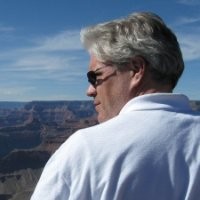
 Dr. Dean Anderson and Dr. Linda Ackerman Anderson lead
Dr. Dean Anderson and Dr. Linda Ackerman Anderson lead 
 Scott Anthony is a strategic advisor, writer and speaker on topics of growth and innovation. He has been based in Singapore since 2010, and currently serves at the Managing Director of Innosight’s Asia-Pacific operations.
Scott Anthony is a strategic advisor, writer and speaker on topics of growth and innovation. He has been based in Singapore since 2010, and currently serves at the Managing Director of Innosight’s Asia-Pacific operations. Paul Hobcraft runs
Paul Hobcraft runs 
 Chateau G Pato is a senior futurist at Inteligencia Ltd. She is passionate about content creation and thinks about it as more science than art. Chateau travels the world at the speed of light, over mountains and under oceans. Her favorite numbers are one and zero.
Chateau G Pato is a senior futurist at Inteligencia Ltd. She is passionate about content creation and thinks about it as more science than art. Chateau travels the world at the speed of light, over mountains and under oceans. Her favorite numbers are one and zero. Jesse Nieminen is the Co-founder and Chairman at
Jesse Nieminen is the Co-founder and Chairman at  As an experience architect, Alain helps leaders craft customer, employee and shareholder experiences for profit, reinvention and transformation. He does this through his personal consultancy Alain Thys & Co as well as the transformative venture studio
As an experience architect, Alain helps leaders craft customer, employee and shareholder experiences for profit, reinvention and transformation. He does this through his personal consultancy Alain Thys & Co as well as the transformative venture studio 

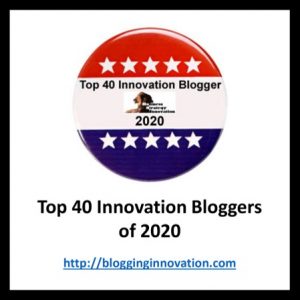

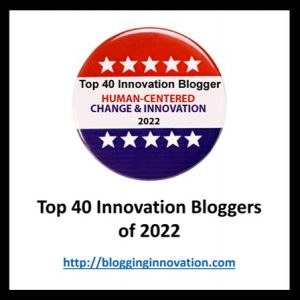
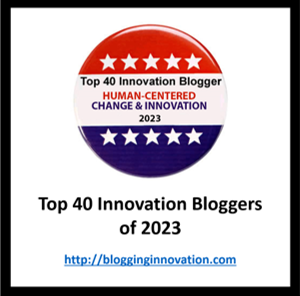
 Happy Holidays!
Happy Holidays!